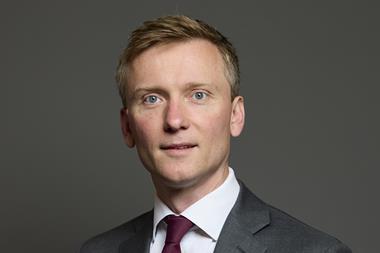When it meets after its summer break this month, the Finnish parliament will begin consideration of a package of four separate bills that will affect Finnish pension vehicles.
“The proposals include investment rules, rules on solvency and how assets can cover liabilities, how pension insurance companies are governed and a reform of the supervisory authorities,” says Matti Leppälä, director responsible for international and legal affairs for the Finnish Pensions Alliance (TELA).
The programme is the result of the findings of several committees that have reported over several months. They included the so-called Puro commission, which examined investment regulation, another which looked at the impact on competition, regulation and the independence in the pensions industry of previous changes to company and insurer legislation, and an assessment of whether to implement elements of the EU pension directive in segments of the pensions industry.
“Everything is inter-linked and the idea is to implement the whole package,” says Leppälä. “Of course the outcome will depend on how it is received in parliament but the package has the government’s backing and the government has a majority so we anticipate that everything will go smoothly.”
For pension funds the main focus has been on the Puro commission, named after chairman Kari Puro, Ilmarinen’s CEO who since the early 1990s headed a negotiating forum for the consideration of pensions issues. Its recommendations would have the effect of enabling pension funds to raise their allocation to equities.
“Increasing the possibilities to invest in equities raises the investment risks,” says Leppälä. “Under the Puro recommendations, this risk is to be shared by all the pension institutions through an investment buffer that will be included in the technical reserves and which is tied to the average of returns of quoted equity investments of all pension institutions. So all investments by private sector pensions institutions in listed equities will be taken into account when calculating the solvency requirements for all pension funds.”
“The Puro commission’s proposals will be implemented from the beginning of next year and phased in over a five-year period,” says Risto Murto, chief investment officer of Varma Mutual Pension Insurance Company. “And because they know what the changes entail, pension funds are already preparing for their introduction. For us the main theme will be to diversify the portfolio, so we will have more equity and alternative exposure and less fixed income.”
Equity was certainly the asset class to have in 2005. “We have traditionally allocated more to equities than other pension insurance companies,” says Jaakko Tuomikoski deputy CEO of Ilmarinen. “In broad terms. last year we had 33.5% of our portfolio in equities, 49.2% in bonds, 10.3% in real estate, 1.9% money market and 5.1% in direct loans.”
In the case of Varma, Murto says: “We had our best-ever year, with a net return of 11.6 %. We had a little under 30% of our portfolio in equities, 10% in real estate and something like 50% in fixed income, where we had good returns thanks to lower long-term interest rates. At the end of the last year we had 8% in alternatives, and here we also had a good year because of excellent private equity and good hedge fund returns.”
Timo Löyttyniemi, managing director of State Pension Fund, Valtion Eläkerahasto (VER), says: “At 14.9% our returns were the highest last year, while the other Finnish pension funds had returns of somewhere between 9% and 14%.”
VER covers state employees, and acts as a buffer fund and is supervised by the finance ministry. And like the Local Government Pension Institution that covers municipal and regional government employees it is not bound by the solvency rules placed on pension insurance companies, industry-wide and company funds.
“Our investment policy differs from the more regulated private pension funds, mainly because they are competing with each other at the same time as they are trying to make good returns,” Löyttyniemi adds. Consequently, VER had a higher equity allocation than other funds. “In broad terms we also had 58% in fixed income and 2% in alternatives,” he says. “Our first four months’ performance was a direct copy of last year, although at the time we were aware that it could not last forever,” says Tuomikoski. “Our total is positive for the first half of the year, some 1.5%.”
“For this year our expectations are much more conservative,” agrees Löyttyniemi. “Provisionally, the first three months were very good and the following three months more or less wiped out most of the gains seen in the first part of the year.”
“We are not re-evaluating our attitude to equity risk as a result of this volatility,” says Tuomikoski. “We still believe there is a positive equity risk premium in the long run,” he says. He adds: “Indeed, if there is change it will probably be that we will have more investments in equities in the future because the adoption of the Puro committee’s proposals will mean that part of the equity risk is transfered to the whole pension system and not by the individual pension funds.” “We are increasing the alternative segment of our portfolio,” says Löyttyniemi. “This year we will double the size to 4%, primarily for diversification. For us alternatives include real estate, private equity and hedge funds. Overall we plan to lift the alternatives to 10% of our portfolio in about four years, with roughly 6% in indirect real estate vehicles because at the moment we do not have any direct real estate. We will be focusing on Europe.”
Indeed Finnish pension funds have increasingly looked abroad, to the Euro-zone, the US and emerging markets, says Lepälä. “Statistics show a drastic decline in the share of investments in Finland,” he says.
“Much of that is because the Finnish government has paid back its bonds and we have not had a reason to buy new Finnish government bonds.”
But the adoption of the Puro proposals may redress this development to some extent, Leppälä adds. “Increasing the possibilities to invest in equities, where there will inevitably be a country bias, would probably lead to increased equity investment in Finnish enterprises.”
Murto agrees: “Finnish public finances are in such good shape that there is little bond issuance. So euro entry has had a major impact, and certainly on the fixed-income side we look upon the Euro-zone as our home market. On the equity side we are organised into European sectors, including Finland, but we have a strong home bias; we feel that we know the domestic companies better. And over the past 12 months we have also diversified more outside Europe. Now 30% of our equity investments are outside Europe - in emerging markets, Japan and US.”
Ilmarinen’s experience is similar. “Nowadays, the majority of our sovereign bonds are non-Finnish and it is much the same with equities,” says Tuomikoski. “They used to be almost totally Finnish and then some three or four years ago we began to change and the allocation to Finnish equities went down to some 40% of the total equity exposure”












No comments yet